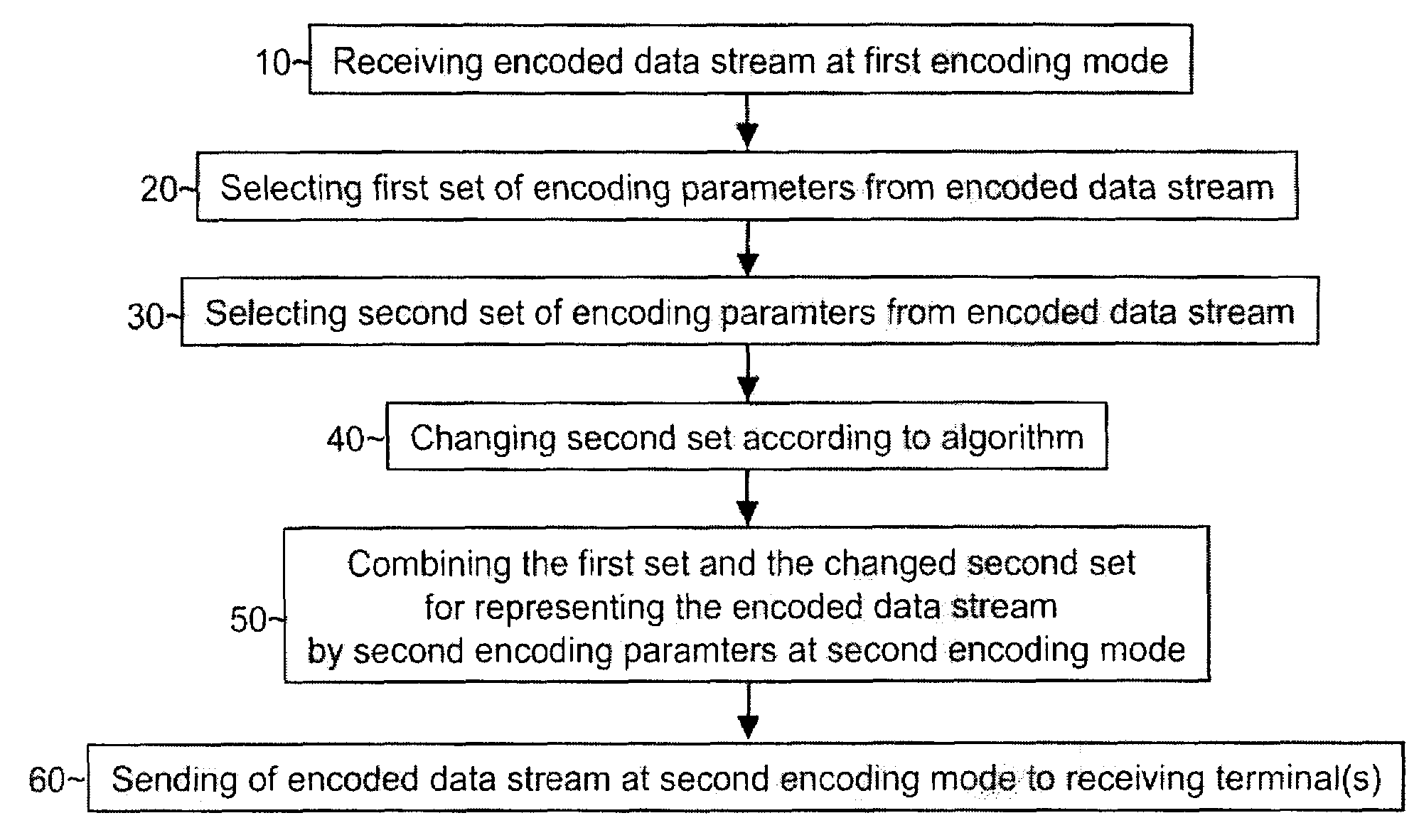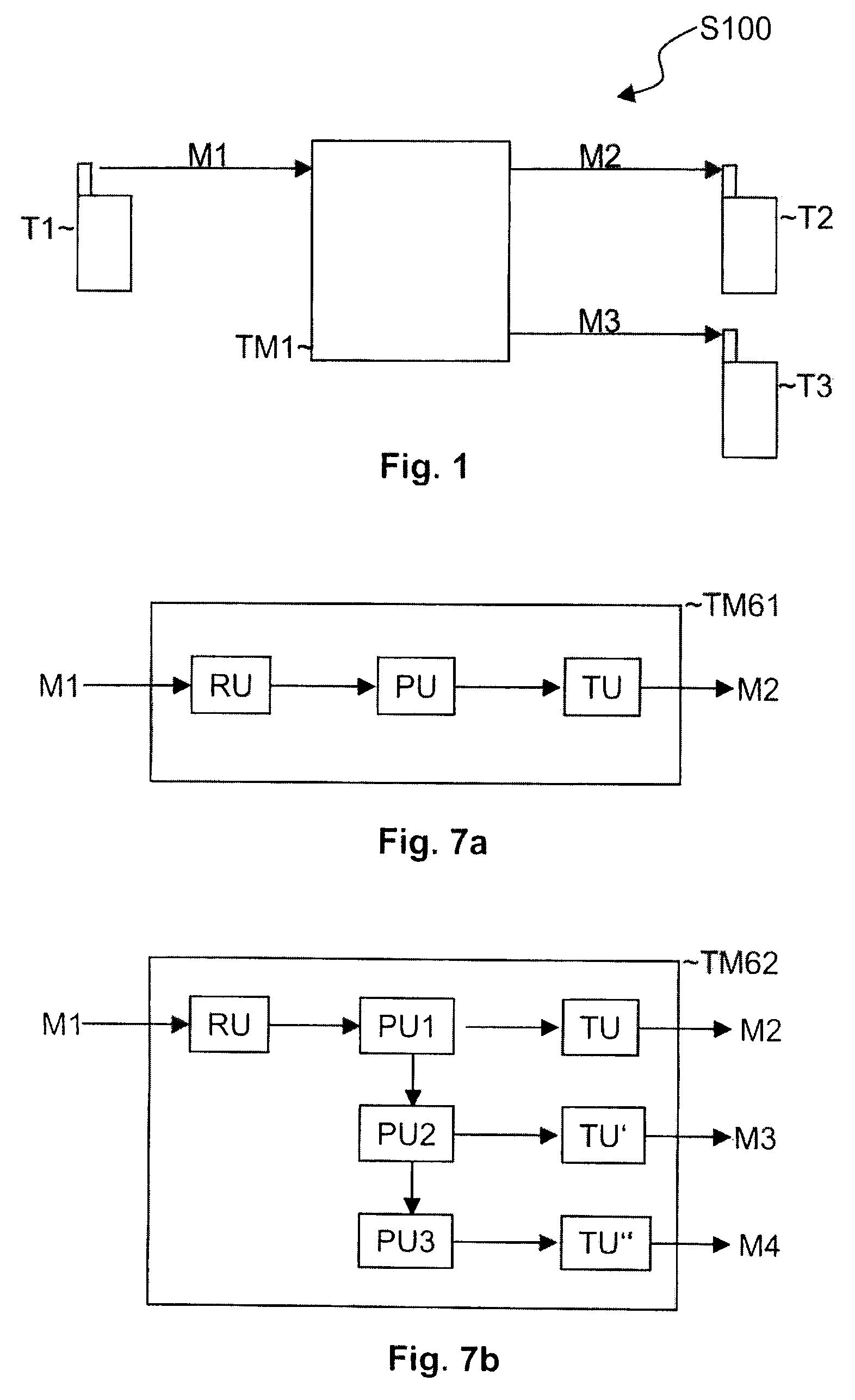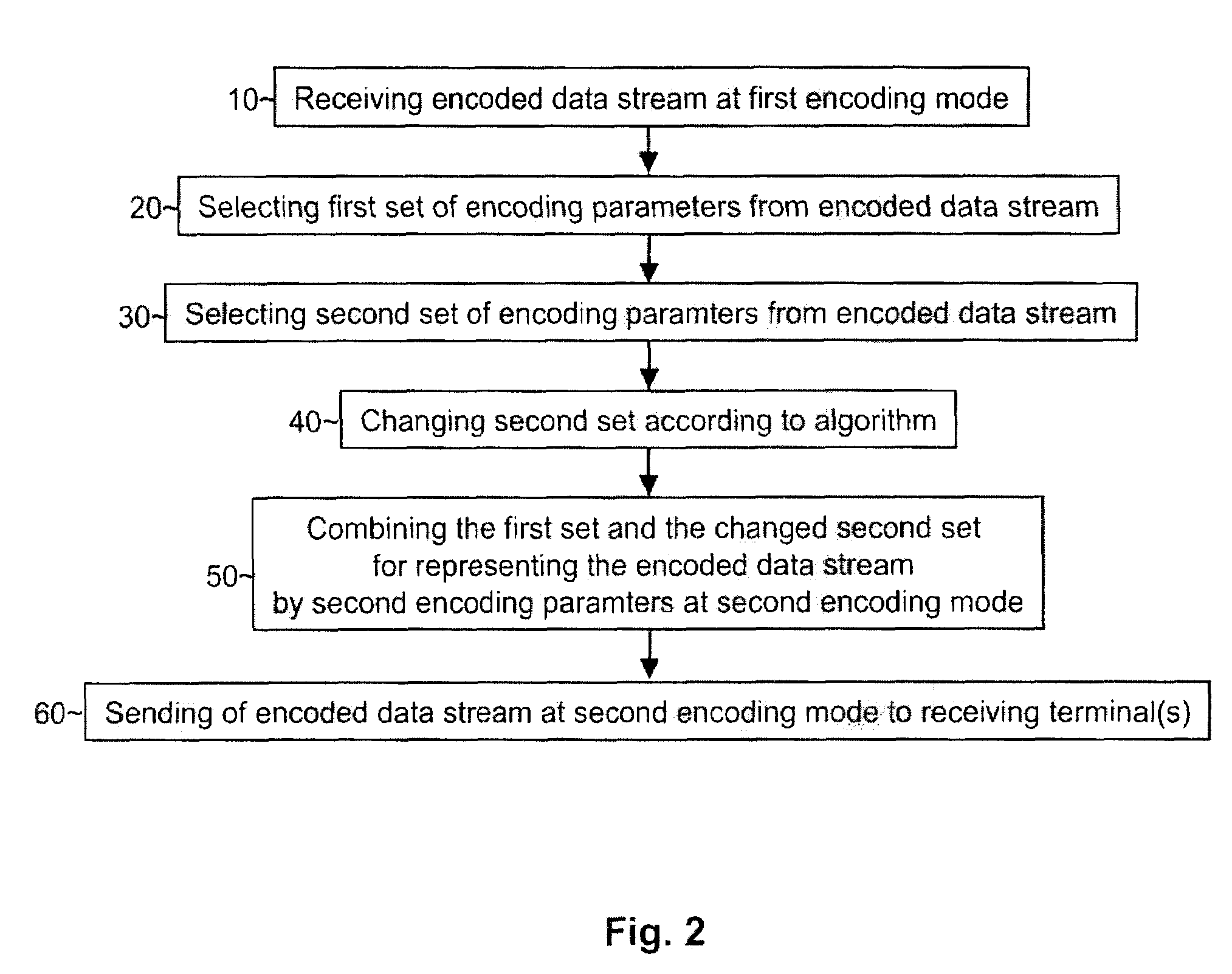Method and device for changing an encoding mode of encoded data streams
a data stream and encoding technology, applied in the field of data communication, can solve the problems of reducing the current transmission bit rate, affecting the quality of data streams, so as to achieve less computational power and preserve quality levels
- Summary
- Abstract
- Description
- Claims
- Application Information
AI Technical Summary
Benefits of technology
Problems solved by technology
Method used
Image
Examples
Embodiment Construction
[0038]FIG. 1 illustrates a system S100 comprising a first terminal T1 sending an encoded data stream M1 at a first encoding mode to a transcoder TM1 of a communication network. The transcoder TM1 changes the encoding mode of the encoded data stream M1 and outputs an encoded data stream M2 at a second encoding mode which is sent to a second terminal T2. The transcoder TM1 may be adapted to serve more than one terminal with the encoded data stream M2 and / or to change the encoding mode of the encoded data stream M1 to a third encoding mode and to output an encoded data stream M3 at the third encoding mode for sending to a third terminal T3 as depicted as an example for a point-to-multipoint application.
[0039]The first terminal T1, the second terminal T2, and the third terminal T3 can be distinct devices as depicted but arrangements wherein at least two terminals share common components, are a common device, or a located on the same platform are also conceivable, e.g. the first terminal...
PUM
 Login to View More
Login to View More Abstract
Description
Claims
Application Information
 Login to View More
Login to View More - R&D
- Intellectual Property
- Life Sciences
- Materials
- Tech Scout
- Unparalleled Data Quality
- Higher Quality Content
- 60% Fewer Hallucinations
Browse by: Latest US Patents, China's latest patents, Technical Efficacy Thesaurus, Application Domain, Technology Topic, Popular Technical Reports.
© 2025 PatSnap. All rights reserved.Legal|Privacy policy|Modern Slavery Act Transparency Statement|Sitemap|About US| Contact US: help@patsnap.com



